The “Heavy” FollowerJuly 20, 2010Over the years, I have come to believe that one of the least helpful pieces of advice a follower can get is to be told she is simply “too heavy.” 지난 몇 년 동안, 단순히 "좀 묵직한데(too heavy)"라는 말이 팔뤄들이 들을 수 있는 유용한 조언중 하나라고 믿어왔습니다.
“Are you calling me fat?” My partner Kate asks, with a straight face, whenever someone says this. 누군가가 이런 말을 할 때마다, 제 파트너 케이트는 "뚱보라는 거예요?" 정색을 하며 묻죠. People have freaked out slightly, backtracking and apologizing before she suddenly can’t hold it anymore and starts to crack up. 사람들은 놀래서, 그녀가 못참고 웃음보를 터뜨리기 전에 수습하고 사과하려 합니다.(짓궂은 장난이였던거죠)
Telling a follower she’s “heavy” is like describing an animal as “wounded” and expecting that to be enough information for the blind vet (weird analogy.) 팔뤄를 "묵직하다(heavy)"라 말하는 것은 짐승을 "부상당했다"라고 설명해, 눈먼 수의사를 위한 정보라고 하는 것과 같습니다(이상한 비유군요).
If a follower is described as “heavy,” there are several different possibilities of what’s going wrong, some of which could be the leader’s fault. 팔뤄가 "묵직하다(heavy)"라는 말을 듣는다면, 뭔가 잘못된 여러 가지의 다양한 원인이 있을 수 있는데, 일정부분 리더의 잘못인 경우가 있을 수 있습니다.
I’m going to try to collect them here, starting with these 12. I’ll keep adding and editing this post, too, as I continue my research. 저는 아래의 12가지 경우를 시작으로 이것들을 수집하고, 이 포스트에 추가하고 편집해서 연구를 계속하려고 합니다.
Before we get to those, however, I want to address the problem at it’s root. 이런 원인들에 접근하기 전에, 먼저 저는 근본적인 문제에 대해 초점을 맞추고자 합니다.
A follower’s goal is not simply to be “light”?”light” doesn’t necessarily mean “better.” A follower’s goal should be to give exactly what the leader’s asking for. 팔뤄의 목적은 단순히 "가볍게(light)"되는 것이 아니고 ,"가볍다(light)"가 반드시 "나은 것(better)"도 아닙니다. 팔뤄의 목적은 리더가 요구하는 것에 정확하게 반응하는 것입니다.
Many advanced leads will sometimes do moves that require a lot of counterbalance?and expect a follower to respond as such, which could easily be described as “heavy.” A great follower is someone who can dance like a feather or a lead zeppelin, depending on what the lead requests at that moment. 많은 고급 리딩들은 자주 많은 부분의 카운터발란스(상대에게 영향을 미치지 않고 균형을 유지하는 것)를 요구하는 움직임을 할 것이고, 흔히 "묵직하다(heavy)"라고 하는 반응을 팔뤄에게 기대할 것입니다. 훌륭한 팔뤄는 매순간 리더가 요구하는 것에 따라 깃털처럼 혹은, 레드 제플린처럼 춤출 수 있어야 합니다.(lead zeppelin이 'led zeppelin'의 오타로 보임, 리더의 요구에 따라 깃털처럼 가볍게도, 록그룹의 음악처럼 격정적으로 춤출 수 있어야 한다는 뜻이겟지요) Possible Reasons Why a Follower Might Be Described as “Heavy.”팔뤄가 "묵직하다(Heavy)"라는 얘길 듣게 될 수 있는 원인들.
It only takes a little bit of tension in small parts of the arm to create a “heavier” follower. Just your fingers might be tense. Or your elbow. That’s all. Make sure all the arm muscles have a natural give and take throughout your dancing?that none of them are rigid, or become rigid at a certain point through their motions. 1. 팔뤄가 일반적으로 필요이상 팔이 경직되어 있는 경우. 이것은 까다로운 것인데, 그것 자체로도 문제가 될 수 있거나, 그 이상, 더 큰 문제의 원인이 되기 쉽거든요. 예로, 팔뤄의 잘못된 자세로 인한 문제를 팔을 사용해 바로잡으려고 하는것을 들 수 있는데요. 그러나 먼저, 이것만이 문제인 것처럼 여기에만 초점을 맞춰 보자구요. 팔의 적은 부분에 텐션(팽팽함)을 조금만 사용해서 "묵직한(heavier)"팔뤄가 되는건데요. 단지 손가락들만이 팽팽해 지거나, 팔꿈치만이 팽팽해 지는거죠. 그게 전부다 보니 그렇죠. 모든 팔 근육의 타고난 탄력을 확인하고, 춤을 추는 동안 팔 근육 어디도 경직되지 않고, 움직이는 어떤 순간에도 경직되지 않도록 하세요.
2. A follower is using her arms to create stretch… Now for some more specific arm tension-related problems. Let’s say a leader with a relaxed frame sits away from his follower and asks for some form of counterbalance?if she doesn’t know how to match that by moving her own body, then she will probably result to using her arm muscles to keep the couple balanced?which means she’s pulling on the guy, and thus “heavy.” Our arm muscles are small and frail compared to the muscle network of the back, core, and shoulders. In dancing, we can accomplish so much more, and with much greater comfort to ourselves and our partners, if we let that muscle network handle as much as possible. 2. 팔뤄가 스트레칭을 하기위해 팔을 사용하는 것. 문제와 관련된 과도한 팔의 텐션(팽팽함). 리더에게 불필요한 힘을 뺀 프레임으로 팔뤄와 거리를 유지하는 기마자세를 취하게 하고, 팔뤄의 카운터 발란스를 요청해 보라고 합시다. 팔뤄가 몸(body)을 움직여 카운터발란스를 맞추는 방법을 모른다면 아마도 상호 균형을 유지하기 위해 팔 근육을 사용하게 될 것입니다. 이것은 팔뤄가 리더를 끌어당긴다는 것을 의미하고, 이것으로 "묵직함(heavy)"을 초래하게 되죠. 팔 근육은 등, 중심, 어깨의 근육조직에 비해 작고 연약합니다. 춤을 출 때, 가능한만 많은 근육조직을 제어할 수 있다면, 더많은 것을 이룰 수 있고, 우리자신과 우리의 파트너가 훨씬 더 많이 편안해 질 겁니다.
3. Follower is using her arm to pull herself in (for instance, the 1-2-3 of a swingout.) 3. 팔뤄가 팔을 사용해 자신을 끌어 당기는 것. (예를 들면, 스윙아웃의 1,2,3 카운트의 경우) 이것은 확실히 문제이고, 4번 항목과 연관되는 경우가 자주 있습니다. 기본적으로, 팔뤄는 스윙아웃에서 리더 쪽으로 들어오게 되거나, 턴을 한다든지 대략 움직여지도록 리딩받고, 리딩 받은 것을 하려다가 리더의 손을 당기게 됩니다.
4. A follower’s pelvis is in front of her shoulders. Aside from this looking as if a follower is attacking you with her crotch on the first half of a swing out, in its subtler forms, it might not even be noticeable. Basically, this will feel like the follower is countering the lead with the top half of her body. It might feel slightly like a “falling backward effect” for the follower, and thus the leader feels he has to hold her up to some extent, hence “heavy.” BTW, Nina Gilkenson has a great impression of a follower attacking a leader with her crotch. 4. 팔뤄의 골반이 어깨위치보다 앞에 있는 경우. 위의 그림과는 별도로, 팔뤄가 스윙아웃의 반 위치에서 자신의 가랑이를 사용해 당신을 공격!(아마도 4카운트에서 팔뤄의 스위블 스타일을 말하는것 같음)한다면, 미세한 형태라 알아차리지 못 할 수도 있습니다. 기본적으로, 이것은 팔뤄가 상반신으로 리딩을 거스르는 것처럼 느껴질 겁니다. 팔뤄가 "뒤로 눕는 효과"같이 어느정도 느껴질 수 있어서 리더는 팔뤄를 조금만 바로 세워야 겠다고 생각할 수 있습니다. 이것이 "묵직함(Heavy)"를 초래합니다.
참고로, 니나 킬슨은 아주 인상적인 가랑이로 리더를 공격하는(스위블 스타일?) 능력을 지녔네요.
5. 팔뤄가 동작의 끝에서 팔을 완전히 늘려 버리는것. "과도하게 팔이 경직되는 문제"의 반대로 팔뤄가 동작의 끝에서 팔을 완전히 늘려버릴때 발생합니다. 팽팽함의 부재로 인해, 여러 문제가 있는데요. 동작의 끝에서 리더가 기대한 것보다 더 많이 나가게 되서 리더는 당신을 빨리,급하게 움직이게 하고, 팽팽함의 부재를 보상하기 위해 팔이나 다른 부위에서 텐션을 유지합니다. 스트레치가 없다면 동작들이 요구하는 것에 정확히 반응할 수 없습니다. 기타 둥둥~~
6. Follower’s posture is fine, feet too close to leader This is rare to see, but bringing the feet forward is an old school (and awesome) way to create counterbalance. (Check out this picture of Dean and Jewel, for instance.) The only problem is, if the leader isn’t asking for that counter balance, you will definitely come off as “heavy.” Dean Collins-studier David Rehm first pointed this out to me, which I’ve always thought is a really cool idea of counterbalance. As you’ve probably noticed by now, most of the times a follower feels heavy is either (1) when the dance is stretching and asking for some form of counter balance (like the end of a swing out) or (2) when the leader tries to move the follower, usually from the stretch. So, number 6 is just a very specific way of saying… 6. 팔뤄의 자세는 좋으나, 발이 리더에게 너무 가까이 있는 것. 거의 보기 힘들지만, 발을 앞에 놓는 것은 카운터발란스를 만들기 위한 올드스쿨(놀랍죠~)방식입니다. (위의 딘과 조웰의 사진을 보세요) 단지 문제는, 리더가 카운트발란스를 요구하지 않으면 확실히 "묵직한(heavy)"팔뤄가 된다는 거죠.
딘 콜린스를 연구하는 데이비드 렘이 이것을 처음으로 지적해 주었는데, 항상 카운터 발란스에 대해 아주 명쾌한 개념이라 생각하고 있어요.
지금쯤 알아차렸겠지만, 팔뤄가 묵직함을 느꼈다는 대부분 첫 번째, 춤이 스트레칭 되고 카운터발란스의 한 형태가 요구될 때 (스윙아웃의 끝부분처럼) 두 번째, 리더가 일반적으로 스트레치를 통해 팔뤄를 움직이려고 할 때 입니다. 그래서 이번경우는 매우 특별한 방식이라 할 수 있죠.
7. Follower is perfectly fine mechanically, but asks for more counterbalance than Lead is offering. A follower might chose a default stretch or counterbalance that is greater than the leader they are dancing with, the result being that at the end of every move, the follower feels heavy. Though a follower should try as a default to match exactly the amount of counterbalance asked for, she can also use this as a neat trick: If she wants to, say, really work her swivels at a certain part of the music, she can ask for a lot of counterbalance, and a good leader will be there to adjust his own and give it to her. 7. 팔뤄가 역학적으로는 완벽하지만, 리더가 제공한 카운터 발란스보다 많은 량을 요청할 때. 팔뤄는 스트레치나 카운터발란스를 같이 춤을 추고 있는 리더보다 더 많은 량을 선택한다면 매번 움직임의 끝에 팔뤄가 묵직함을 느끼게 될 것입니다. 팔뤄는 요청받은 카운터발란스에 자신이 정한 양(default)으로 정확히 맞춰야 하지만 재밋거리로도 사용할 수 있습니다. 팔뤄가 음악의 특정부분에서 스위블을 하기 원한다면, 더 많은 량의 카운터발란스를 요청할 수 있고, 훌륭한 리더는 자신의 카운터발란스를 조절하고 팔뤄에게 맞춰줄 겁니다.
8. 클로즈드 포지션이나 스윙아웃의 중간에서, 팔뤄가 등의 잘못된 위치로 커넥션을 하는 경우. 스윙아웃을 하는 동안 리더의 손이 팔뤄의 등(혹은 어깨) 위쪽에 있는 리더에 익숙한 팔뤄의 경우 알기 쉬운 사례입니다. 그러고 나서, 팔뤄는 클로즈드 포지션동안 등 중간이나 아래 부분에 커넥션을 선호하는 리더와 춤을 춥니다. 등아래로 반응하는 것이 익숙하지 않은 팔뤄는 리더와 클로즈드 커넥션 상태에서 갑자기 등을 둥글게 굽힙니다. 팔뤄는 리더가 자신을 빨래거는것처럼 느낄것이고, 리더는 팔뤄가 묵직하게 느껴집니다. 팔뤄는 클로즈드 포지션동안에 리더가 요구하는 등의 어떤 부위에서도 반응을 할 준비가 되어 있어야 합니다.
9. Leader expects follower to move even though he doesn’t give her what she needs to move. Some times, if a Leader is used to dancing with girls who are eager to move and finish all the movements, he will, unawares, become lazy. He won’t lead the follower to move, expecting her to do so. When he comes along a follower who doesn’t move without the proper leads, she will feel heavy. He has been living the life of luxury, having had followers do half of his leading for him. 9. 리더가 팔뤄에게 필요로 하는 움직임을 주지 않으면서도 팔뤄의 움직임을 기대할 때. 때때로, 모든 동작들에 움직이고 끝내는 것을 갈망하는(리딩을 충분히 받아서 움직이지 않는 조급한 팔뤄잉을 뜻하는 것 같음) 팔뤄와 춤추는데 리더가 익숙해지면, 그는 자신도 모르게 게을러지게 됩니다. 그는 팔뤄가 움직이도록 리딩을 하지 않으면서 팔뤄가 움직이길 기대합니다. 그러다 적당한 리딩이 없으면 움직이지 않는 팔뤄와 춤을 추면, 무겁다고 느낄 겁니다. 그 리더는 호사스런 삶을 누려왔고, 리딩의 반만 해도 되는 팔뤄들과 춤을 추어 온겁니다.
10. Leader is asking follower to be heavier than he expects; doesn’t realize it. On the other flip side, if a leader has been dancing almost only with follower’s who are always light, he might be asking his follower to be heavy and not expect it. Hell, if the dance floor is slippier than usual, he might be compensating weirdly and will ask the follower to be heavier than he expected (this happened to me a few months ago. In trying to stay grounded with slippery shoes, I tensed up weird and took my follower down with me (into the land of heaviness, that is.)) 10. 리더가 깨닫지 못하고 기대한 것보다 팔뤄에게 더 무거워 지라고 요청할 때.(생각한것과 리딩이 다를 때) 다른 경우로, 가령 리더가 항상 가벼운 팔뤄들하고만 춤을 춰 왔다면, 그는 팔뤄에게 무거워 지라고 요청하고 기대하지는 않을 겁니다. 혹은, 재수없게 바닥이 평소보다 미끄럽다면, 그는 균형을 잡으려 용을 쓸테고, 기대했던 것보다 무거워 지라고 요청할 것입니다.(몇 달 전에 내가 격은 일이예요. 미끄러운 신발을 신고 지면에서 중심을 잡으려고, 긴장해서 팔뤄를 잡고 내렸어요(무거운 땅을 향해)).
But please don’t compensate by dancing out of the ground. The way you walk/run are probably good determinations of how much weight to put into the ground and how to find your natural downward pulse. 11. 팔뤄가 지면으로 모멘텀을 너무 많이 향해 놓을 때. “지면으로 앉으려는”것이나 지면으로 펄스를 눌러 놓는 것이나 몇몇 팔뤄들은 자신의 엉덩이가 바닥을 향해 낮춰져 있는 것을 알게 될 것이고, 모든 움직임들이 굼뜬 것 같은 느낌이 들 겁니다.
하지만 지면을 벗어난 춤으로 맞추려고 하지는 마세요.(지면을 향한 모멘텀을 없애지 말라는 얘기 같음) 걷거나 뛰는 것은 지면으로 체중을 실고, 자연스런 펄스를 알아내는데 좋은 방법들입니다.
12. 팔뤄가 고릴라와 춤을 추며 자신을 보호하려고 하는 경우. 팔뤄가 짐승과 같은 괴력을 사용하는 리더와 춤을 춘다면 팔뤄는 텐션을 크게 하고, 조임을 크게 하는, 컨트롤하에 이런 것들을 유지하며 자신을 보호할 수 있습니다. 그러나, 그 리더가 이런 팔뤄를 “묵직하다(heavy)"라고 생각한다면, 팔뤄는 그를 교정하지 않는게 더 좋을거예요. 적어도, 그가 그녀를 무겁다고 생각한다면, 다시는 그와 춤출 필요가 없죠.
Conclusion Though there are many different ways and reasons a follower can be “heavy,” you can sense some common themes: tension, weird posture, inability to counterbalance, and often, all three mixed together. Another common theme is giving the leader more than he asks for, or giving him weight in places he’s not asking for. 결론 팔뤄들이 “묵직하게(heavy)" 될 수 있는 여러 방식들과 이유들이 있지만 몇 가지 공동된 논지들(텐션, 이상한 자세, 카운터발란스를 못 맞추는 것, 그리고 자주 이 세 가지가 혼합된 것들)을 알아낼 수 있을 겁니다. 다른 공통된 논지는 리더가 요청하는 것 이상으로 체중을 싣거나, 요구하지 않았을 때 체중을 싣는 것입니다.
A Quick Note on the inherent sex generalizations in dance language: All followers in this text are referred to as “she,” though this is only for the sake of clear understanding and flow throughout the writing. “He/She” “or “She/He” felt too clunky, and using “it” only adds to the sexist problem. In truth, almost every male-follower I’ve ever danced with could be described as a “heavy” follower?mainly for reasons mentioned below. This leads me to…
댄스용어에서 사용된 성적 개념에 대한 민감한 참고사항 : 본문안에 모든 팔뤄들은 “그녀(she)"로 쓰여져 정확한 이해를 목적으로 사용되었지만, 글 전반에 걸쳐 등장합니다. “그/그녀(He/She)"혹은 ”그녀/그(She/He)"란 표현이 거슬리고, “그것(it)"으로 표현한 것도 성차별 논란을 더 하겠죠 . 뿐만 아니라, 그림에서, 팔뤄에게 매력적인 1937년 금발헤어를 씌웠습니다. (노란색 뿔따구들). 하지만 이것은, 다시 말하지만, 정확한 이해라는 목적을 위한 개념으로 사용한 겁니다. A Quick note on actual follower size (Or Physics: Our Best Friend, Our Worst Enemy.)실제 팔뤄사이즈에 대한 참고사항(혹은 역학상 :최고의 친구, 최악의 적) Kate’s “Are you calling me fat?” joke is just that. A joke. But, as a way of coming full circle, I do want to talk about relative size. If you are an eighty-pound winged pixie follower, you might have many of these problems to small degrees and have never been called “heavy.” Ironically, all people probably say to you is “I bet you’d be great at aerials!”** 케이트의 “내가 뚱뚱하단 거예요?”란 농담이 그것입니다. 단지 농담이죠. 하지만 문제에 본질에 대한 접근법으로, 상대적인 사이즈에 대해 얘기하려고 해요. 만약 당신이 80파운드(36.287kg)의 날개달린 요정처럼 작은 팔뤄라면, 작은 체격때문에 많은 문제들을 가지고 있을 것이고, 결코 “묵직하다(heavy)"란 말을 들어본 적이 없을 겁니다. 반어적으로, 모든 사람들이 아마도 이런 말을 하겠죠 “전 당신이 에어리얼을 아주 잘 할 수 있을 거라고 확신해요.” **
If you are a lumbering 250 pound guy with the exact same problems as the 80-pound pixie winged follower, and to the exact same extent, you will be the one getting the “you’re too heavy” comments. Only because physics has magnified the problem. 만약 당신이 80파운드의 날개달린 요정처럼 작은 팔뤄로서 정확히 같은 문제를 가진 육중한 250파운드(113.396kg)의 남자이고, 정확히 같은 체격이면, 당신은 “당신은 너무 묵직한데요”라고 듣게 될 겁니다. 단지 물리적 양은 문제를 과장시키기 때문이죠.
(춤을 출때의 느껴지는 "묵직함"은 물리적 단위의 무게로서 "무거운"것과 다른 개념인데 무게와 연관시켜 오류를 범한다는 얘기 같네요)
So, if you’re an 80-pound winged pixie follower, beware that many of these things might apply to you even though you’ve never been called “heavy.” And if you truly want to be a great follower, you’ll probably often have to check in and see what problems you’re getting away with because of your size. 그래서, 만약 당신이 80파운드의 날개달린 요정처럼 작은 팔뤄라면, “묵직하다”라고 들어본 적이 없는데도 불구하고 이런 많은 것들(위에 예시된 12가지 원인들)이 당신에게 적용된다는 것을 인식하세요. 그리고 정말 훌륭한 팔뤄가 되기 원한다면, 당신의 사이즈 때문에 어떠한 문제들을 회피하려 하는지 자주 점검하고 찾아내야 합니다. ?????????????????????????????????????????? **?Another thing I’m annoyed by is when some guy introduces me to his beginner dancer 80 pound winged pixie partner and says “I now have someone to do aerials with.” I usually want to tell them “You’ve always had plenty of people to throw around. For instance, the three or four advanced followers you dance with all the time, that would love to do aerials.” **-다른 한 가지 일로 짜증이 났는데, 어떤 남자가 내게 초급댄서인 80파운드의 날개달린 요정처럼 작은 파트너를 소개하며 “전 이제 에어리얼을 할 사람이 생겼어요”라고 말했을 때 였는데요. 전 그들에게 이렇게 말하고 싶군요 “에어리얼을 할 수 있는 많은 팔뤄들이 항상 당신에게 있어 왔어요”. 예를 들어, 당신이 항상 함께 춤을 추는 셋 혹은 네 명의 고수 팔뤄들은 에어리얼 하는 것을 좋아할 거예요.
What he’s thinking is that now he has less weight to throw around. Now he can learn aerials faster because he won’t have to concentrate on technique as much. Now, he can really get some height out of those flips. 에어리얼을 하기 위해 팔뤄의 무게가 적어야 한다는 게 바로 그의 생각인데요. 지금 무게가 적은만큼 테크닉에 집중해야만 하는 상황이 아닐 것이기 때문에 에어리얼을 빨리 배울 수 있어요. 지금 그는 실제 그런 공중으로 띄우는 기술(flips) 몇 가지를 익혔을 겁니다.
He hasn’t taken into account that a follower has to be a good follower to do an air step consistently and safely. That she has to do a lot of intricate work herself to make things happen effortlessly. That, in most aerials done well, physics does the bulk of the heavy lifting, so what you really want out of an aerial partner is a girl who knows how to control her body, whatever body that may be. 그는 팔뤄가 공중에서 안전하고 지속적으로 스텝을 하는 훌륭한 팔뤄여만 하는 이유를 깨닫지 못하고 있습니다. 자연스럽게 에어리얼을 성공하기 위해 팔뤄는 스스로 난해한 작업들을 많이 해야만 합니다. 즉, 대부분의 에어리얼이 잘 되려면, 물리학이 무거운 걸 드는 게 사용되므로, 자신의 몸을 제어할 줄 하는 에어리얼 파트너가 필요한거죠. 신체 어디든 제어할 수 있는.
And, what is more annoying, is that he usually hasn’t once thought about the idea of going to a gym himself. 그리고 더 웃기는 건, 그는 일반적으로 체육관(헬쓰클럽ㅠㅠ)에 갈 생각을 한 번도 안 해 봤다는 겁니다.
Until other leaders around him start going to the gym, that is. But I don’t worry about it. Sooner or later he will realize just how heavy 80 pounds can be. 주변에 다른 리더들이 체육관(헬쓰클럽ㅠㅠ)에 가기 전까지 말이죠. 그렇지만, 별로 신경 쓰지 않아요. 조만간 80파운드가 묵직할 수 있다는 걸 깨닫게 될 테니까요.
However, a follower’s guide to aerials is another essay topic unto itself. Coming soon to Swungover? 그렇지만, 에어리얼 팔뤄가이드는(그 놈 말이죠) 에어리얼이 될 때까지 다른 시도를 할 텐데요. 곧 Swungover로? |
출처: 태양저편 원문보기 글쓴이: 임근빈

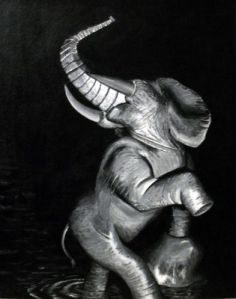
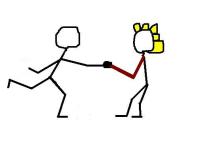
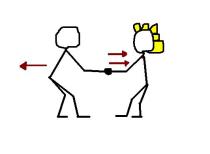
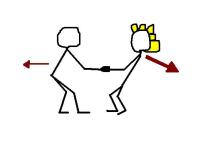
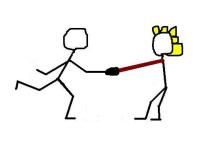
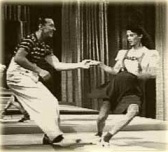
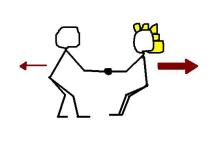
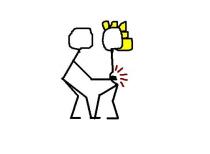
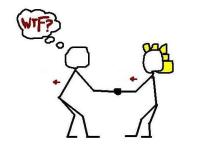
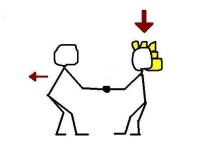

첫댓글 아래 노히가 남긴 글에대한 번역본이여요~ 답글로 달려고했으나 귀찮아서 걍 올림. ㅋ
ㅋㅋㅋ 링크쌤 잘 읽었어용. 더운데 강습하시느라 수고 많으세요.^^
링크누나 쵝오.
링크누나.. 완전 감사!! 대신 이번주 복부운동 다리 땅에 닿아도 살짝 눈감아 드리겠음..ㅋㅋㅋㅋㅋㅋㅋㅋㅋ 팔뤄 며 리더며 자기 문제를 인식 하는게 중요하군요..ㅎㅎ 팔뤄들이 .. 리더들이 꼭 봤으면 하는 글이네요 ^^.. ㅎㅎ 그리고 에어리얼 부분은 공감도 많이 가네요.ㅎㅎ 남자들이 근력 운동없이 근력 기술?을 하려는것 자체가..ㅎㅎㅎ ^^ 감사 감사~